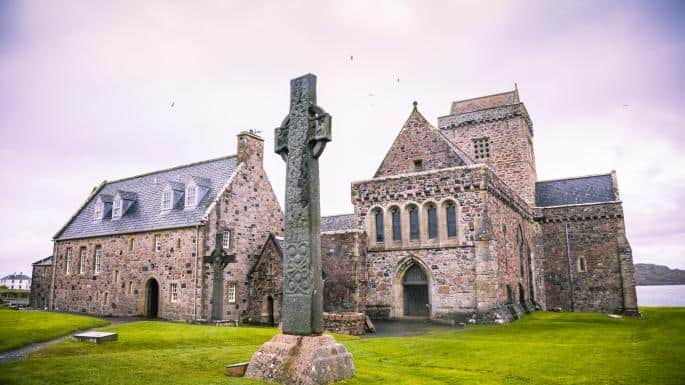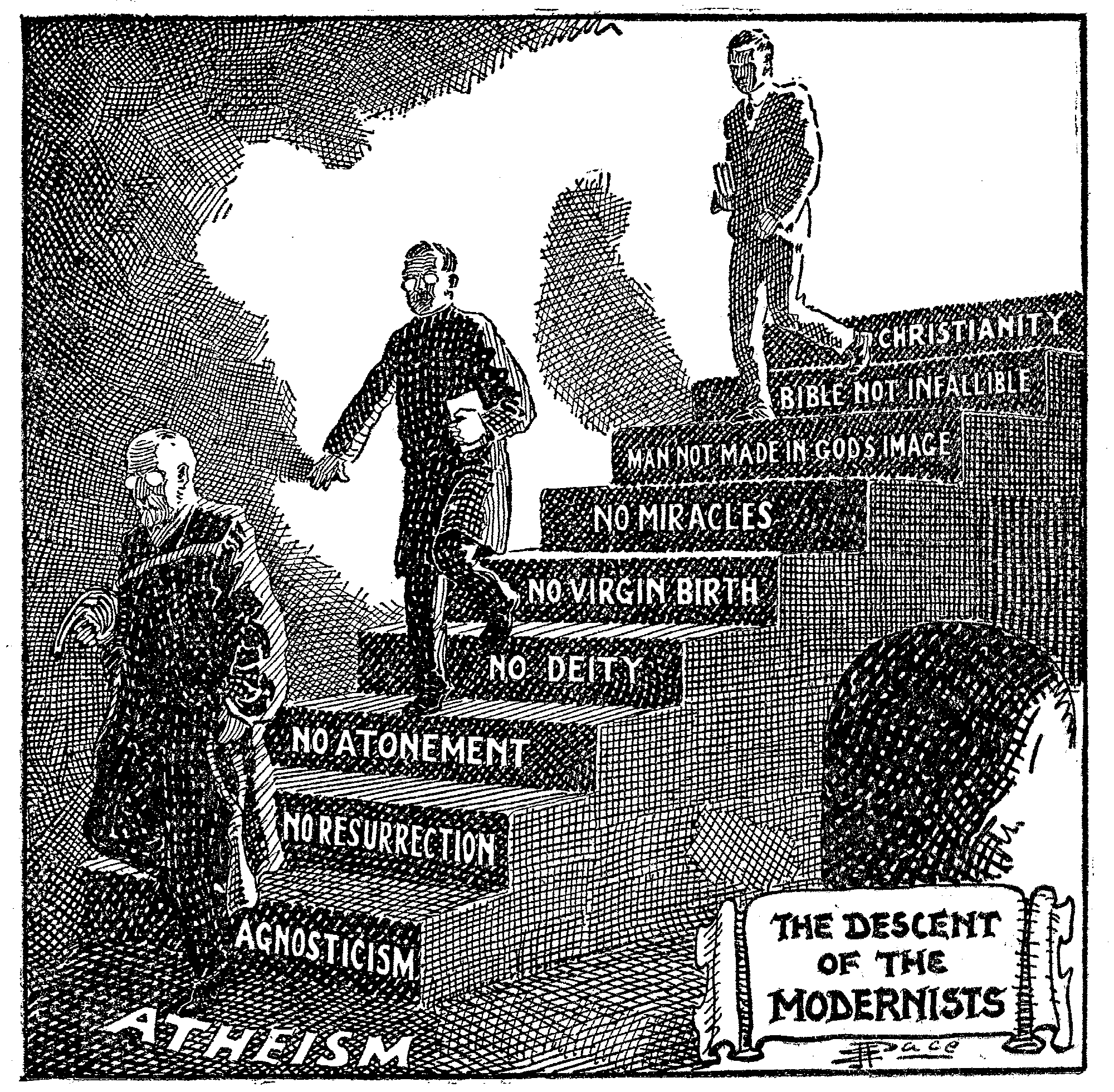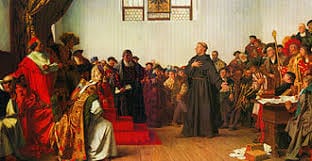This episode of Communion Sanctorum is titled – “Into the Middle”
Justinian I’s reconquest of Italy and liberating it from its brief stint under barbarian control was even briefer. Soon after Justinian’s eastern forces regained control of portions of the peninsula and put them back under the Empire’s dominion, yet another Germanic group invaded and put most of Italy under their jurisdiction.
The Lombards were a Scandinavian group who’d emerged as the dominant Germanic tribe. In 568, they conquered Byzantine Italy and formed what is known as the Kingdom of Italy, which lasted to the late 8th C when it was brought down by the Franks, though Lombard nobles continued to rule portions of the peninsula until the 11th C.
The Lombards conquered Italy during Gregory the Great’s term as pope. As the Lombards advanced on the city of Rome, with not a whit of hope of help from the Imperial ruler sitting in Ravenna, Gregory took control in Rome. He secured supplies for the coming siege though both famine and plague were decimating the land. He bolstered Rome’s defenses and commissioned new military leaders to lead an army into the field to meet the Lombards. Once these plans were underway, Gregory opened negotiations with the enemy and finalized a peace with them, though made without the Emperor’s approval.
It’s difficult for the modern student of history to understand how the Roman popes managed to wield such political power as they did during the Middle Ages. We tend to layer back onto history the current state of affairs. And as Europe is now firmly ensconced in a post-Christian era where the Pope has little political power, it’s difficult to see how he could have been the single most powerful political force for hundreds of years.
While the influence of the Pope grew ever since the days of Leo the Great, it was under Gregory the Great that the office of the Pope became a defining role in the History of Europe.
Though Gregory was in his senior years and increasingly frail, what he accomplished was simply astounding! At the same time, he was dealing with the Lombards and the daily needs of the city of Rome, he administered the Church. He oversaw its estates, cared for the needs of his flock, provided leaders for the churches of Gaul and Spain, dealt with the ever-present challenge of the church at Constantinople which vied with Rome for pre-eminence, and on top of all that, as we’ve seen, planned for the expansion of the Faith into new realms like England.
Gregory’s term as pope marks the transition from the ancient world where Imperial Rome ruled, to the medieval world united by the Roman Catholic Church.
The Church played a major, maybe even the most important role, in the shift to the medieval world. It was the one institution that survived and transmitted Roman culture into the Middle Ages.
Though altered to fit its unique spiritual emphasis, the Roman church drew its organizational and administrative structure from the old Imperial form. Each city had its own bishop and each region an archbishop. Within each bishop’s realm of oversight, called a diocese, there was a staff of assistants that closely resembled Roman civil administration.
Church rules, called “Canon Law” were parallel to Roman Civil law. At first Canon Law was defined by Church Councils that met to decide both practical and doctrinal issues. Eventually, Canon Law came to include decisions of the Pope, a form of Imperial edict.
Latin became the common tongue, and Roman forms of literature and education spread wherever the Church took hold. Whenever a new church was built, its form was that of the old Roman meeting-hall; a basilica.
As we saw at the end of the previous episode, though the Germanic barbarians conquered the Western Empire, it wasn’t long until the Church conquered them. While most of the Germanic tribes were Arian, when they moved south into areas controlled by the Roman church, they converted to Catholic Christianity. The Lombards were the last of the Germanic tribes to invade Italy. Part of Pope Gregory’s strategy in negotiating with them was to convert them; turning them into brothers in Christ. They too began as Arians, but he supported the Lombard Queen Theodelinda, a Catholic. It didn’t take long before the Lombards were firmly planted in the Catholic Faith.
Gregory appealed to other Germanic leaders in Western Europe and they shed their Arianism as well. The Visigoths of Spain became Catholic when Gregory’s letter reached their leader Reccared.
There was only one Germanic tribe to enter the Empire as pagans rather than as Arians – the Franks. They occupied an area near the Rhine River. When their king died in 481, he was succeeded by his 15-year-old son: Clovis. 5 yrs later Clovis led his warriors southwest against other Frank tribes. He extended his rule all the way to the Seine. Throughout this time he worshipped and gave credit to the ancient Frankish gods.
Clovis’ victories moved the rulers of neighboring tribes to attempt negotiations. One of Clovis’ envoys returned from a trip to the court of Burgundy, describing his beautiful grand-daughter Clotilda. Clovis sent another envoy to the Burgundian king asking for Clotilda’s hand in marriage. The Burgundians were worried what Clovis would do if they balked so they consented and the two were wed.
Clotilda was Catholic and shared her faith with her husband but he remained committed to the old gods for the next 3 years. He thought his distrust in the Christian God warranted. After all, hadn’t the Roman Empire converted to the new faith over a century before? Why hadn’t He protected them from the barbarians? Then a more personal trial struck. Clotilda baptized their first-born child, who died a week later. While Clotilda’s faith was unshaken, Clovis was enraged.
Despite his suspicion of baptism, Clovis allowed Clotilda to have their 2nd child baptized. When this son also sickened, Clovis was furious. But the boy recovered at Clotilda’s urgent requests to Christ. With all of this freshly before him, Clovis went out to meet what was the Frank’s biggest challenge to date, a fierce Germanic tribe called the Alemanni. The battle took place near the city of Bonn. The Franks were losing badly so Clovis called upon his old gods. No help came. In desperation, staring defeat in the face, Clovis cried out to the Christian God saying something like, “Jesus, if you really are the Son of God as my wife tells me, grant me victory and I will believe in you.” Certainly, a dubious request and God doesn’t bargain with humans. But the fact is, the Franks turned things around and defeated the Alemanni.
That day in 496 turned out to be a dramatic turning point for the history of Europe. Clovis was good to his promise. He invited Bishop Remigius of Reims to instruct him in the Faith. Then on Christmas night, he was baptized.
Remigius continued to instruct Clovis in the Faith but his understanding lacked something. When Remigius told the story of how Jesus was arrested, tortured and executed, Clovis jumped up and shouted, “If I’d been there with my Franks, I would have avenged Him!”
A few thousand of his warriors soon followed their king in baptism. One anecdotal story that comes from this time was that there were so many troops wanting to be baptized they had to do so in mass-baptisms at a river. A dozen of them would enter the water at a time as a priest stood on the shore and blessed them. As they lowered themselves under the surface they lifted their right hands above their heads so they never went under the water. When the priest asked why, the warriors explained; they didn’t want to baptize their sword hand. They wanted to continue to make war and didn’t want to submit the hand that held the sword to the rule of Christ. Now, to be clear, this story, while attributed to Clovis’ troops, is also assigned to other periods of history, especially the Crusaders. Whether it’s true or not is in dispute.
Clovis was one of the first of the line of French kings known as Merovingians.
What this story illustrates is an important feature of medieval society; Adoption of Christianity was, in essence, a royal policy. The ruler’s religion decided the religion of his subjects. And queens did much to bring about the conversion of their husbands.
Clovis’ conversion paved the way for an important alliance between the papacy and the Franks. But it took decades before that alliance altered the way the Franks treated the Church. Throughout most of the 6th and 7th Cs, the Merovingian court-appointed their own bishops to the churches of Gaul.
At the end of the 6th C, Pope Gregory began to work with them to alter this but it wasn’t until the 8th C that Rome was able to regain control over church appointments.
After Gregory, the West entered a difficult period as we chronicled in Episode 34 – The Great Recession. The Western Church suffered abuse from the Lombards and Byzantine rulers. In Gaul, the Merovingians treated the Church as a political tool and the quality of church leaders declined dramatically as church offices were sold to the highest bidder.
Until this period, the clergy were men of great learning and intellectual skill. A list of the great thinkers of the 1st thru 6th Cs is dominated by monks and priests. But the political corruption that followed hard on the heels of the demise of the Western Empire led to a decline in the intellectual prowess of the clergy. That decline was slow at first but escalated as the decades passed. That’s what happens when church offices are filled by political appointment paying favors rather than gifted and called servants.
Bishop Gregory of Tours lived in the late 6th C and is the main source of information about the Merovingians. He describes the sorry state European society had fallen to. He wrote that it was a period when women stood almost alone in maintaining what was left of morality and virtue. Monasteries and convents became lonely islands of true religion set in a sea of moral debauchery and spiritual corruption that included many, if not most churches.
This state of affairs continued all the way to the 8th C when revival took root at the instigation of Celtic missionaries from Ireland. Other factors that led to this revival was a renewed papacy and a new Frank dynasty.
Celtic missionaries had been at work in Europe since the last half of the 6th C. Most notable of these was Columba. He was born to a noble family in Donegal, Ireland. After schooling, he was ordained a priest and planted churches and monasteries in Ireland. Then, in 563, Columba left his homeland. Why he left is a mystery but it seems it was a kind of self-imposed exile. Columba helped spark a civil war between his and the king’s clans. As penance, he left – setting himself to go where ever the winds blew.
He was accompanied by a dozen friends. They landed on the tiny island of Iona on the west coast of Scotland where, against all expectations, they established a thriving monastery. Many an objective observer would assume Columba and his companions would have died within in a year due to the harsh conditions. On the contrary, while life was tough, they thrived and the monastery became the focal point for a new movement of God that would reach out to thousands of miles.
Missionaries were soon being sent out to found monasteries along the coast of Scotland, back in Ireland, and along the northern coast of Europe from Gaul all the way to Scandinavia.
Columba himself was war-like in the way he went about spreading the faith. At his preaching, King Brude of the Picts was converted. Columba’s spiritually aggressive posture was necessary because he was dealing with a determined and overtly evil enemy in the form of the Druids who only understood force. A weak and timid brand of Faith would only have provoked them to acts of hideous grotesquerie.
Columba’s blend of mystic spirituality w/a tough-minded application of the faith in a political and social context, all shaped by a commitment to scholarship and a love of nature, marked him as that rare individual who was the right man at the right time doing the right thing for the right reason. He’s the proto-typical example of Celtic Christianity. Columba was the mold the Celtic Christian missionaries were cut from as they sailed across the sea to land in Gaul, carrying the sparks of revival that united to bring Europe out of the Great Recession.





